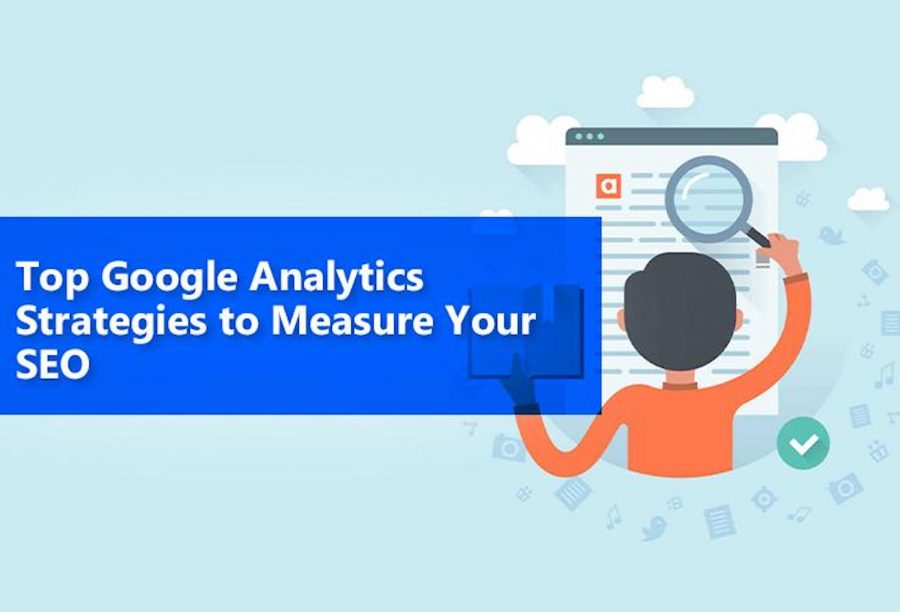
You know they say if you can’t measure something, you won’t be able to understand it let alone improve it—in short, you’ll be signing up for a recipe for disaster! Search Engine Optimization (SEO) is no different. Let’s talk about some of the top Google analytics strategies to help measure your SEO.
Do you know what doesn’t lie? Data! Stats show that Google receives 75,000 searches per second and 67% of all clicks go to the first five organic results.
Let’s get real here. SEO is no joke! It’s hard, it’s a LOT of work and you’ve got to keep track of your efforts so you don’t end up being in a tight spot. Many businesses go “all in” with their SEO campaigns, from building links to optimizing title tags; they do it all, but when it comes to actual returns, they’re probably lost in space.
Sure, keyword ranking is a great measure to see if your SEO efforts are making a dent, but it isn’t smart to rely on a single metric. You need to go beyond it to see the wonders of organic search on your ROI.
Luckily, one of the best FREE tools for measuring SEO is available, and there’s a great chance that you might already be using it for site tracking. Yes, you guessed it right! It’s Google Analytics!
Want to know how to use Google Analytics to measure SEO? Read on!
First Things First, Speed it Up
Before we dive into the good stuff, make sure that your website has an epic loading speed as Google has made it an actual ranking factor for your site. But why is site speed important? In our highly digitized lives, we tend to run low on patience when it comes to web surfing.

A study shows that a website’s bounce rate dramatically shoots up if it fails to load in a couple of seconds. This means users sort of dump you before even they get to know you and Google doesn’t like bad user experience. Straight fact? Slow pages are a drag so consider your rankings doomed.
Ergo speed may not be the primary but important metric that matters for SEO. To make things easier, Google Analytics comes with a bunch of site speed metrics like Site Speed and PageSpeed Insights to help you track your site speed. This way you can find out how fast visitors are able to see and interact with your content or website to help you spot areas that require improvement, and then track changes. However, you should also know that a lot depends on your user’s end as well as the kind of browser they use, processing speed, and most importantly, their ISP and internet plan.
So, if you’re a company, you can only work with what’s in your hands, which is the website and the server. And for all, you impatient clickers out there, get a high-speed internet plan like the ones offered by Mediacom Internet Service so you don’t click away in a rush if a website seems too slow.
Keep An Eye On Your Website’s Traffic Quality
Do you think that quality is subjective and you can’t really measure it? This may be true in some cases, but with SEO there are a lot of ways to measure the quality of traffic coming to your site. So, if you want your SEO strategy to hit gold, you must be aware of any slips and cracks to stay on the right track. Any improvements or decline in the quality of your search traffic can easily be measured through the Assisted Conversions report by Google analytics.
You just need to set the date range to ‘last month,’ then put it side by side with the previous period and voila! You’ll have a month-to-month comparison of conversions resulted straight from the search or multiple user visits to your site. Plus, you’ll also be able to spot any negative trends. Just look or two things: if your search conversion is dropping but the traffic remains stable, the quality is low and needs a fix. You need to target your keywords to make people take an interest in what you sell. Secondly, if your search traffic scores are flying high, your SEO traffic is right on the money.
ProTip: To access Assisted Conversions, click on Conversions, and then go to Multi-Channel Funnels.
Know Your Organic Search Traffic

The best part about knowing what drives more traffic to your website is that it helps you find keywords and landing pages that have strong business intent to improve the quality of the traffic. This information can be gained from the Channel Grouping report. Here’s how you can access it:
- To see your organic search traffic, click Acquisition.
- Now click through All Traffic to go to Channels.
- The Channels section will show you the Channel Grouping report. There you will find traffic sources segmented by channel.
- Finally, click on the “Organic Search” channel to get a more detailed report.
Analyze Referral Sources
Do you know where your visitors are coming from? Which social media platform is contributing more to your site traffic? Or are those blog posting efforts are paying you off? No matter what size your business is, you must be able to answer these questions to run a successful SEO campaign.
Thanks to Google Analytics, this can be done in a hassle-free way from the Referral Traffic report. You cannot only track these visits you get from social media and understand your customers better, but you can also optimize pages/platforms that help drive more referrals.
Note: To access Referral Traffic report, click on Acquisition > then tap on All Traffic > and then Referrals. Once you reach here, a list of the pages will appear in front of you that referred traffic to your site.
Get A Dashboard
We all have bad days and on those days, you don’t need those knotty details and hard-grasp metrics to prove a point. Sometimes it should be as easy going as a pie chart or a bar graph to measure the data.
If you’re having one of those not-so-good days, don’t worry! The built-in dashboard interface will make the job easier by showing all your Google Analytics and SEO data in an easily accessible, sharable, and printable chart.
This way you’ll be able to save time on analyzing the puzzling hard stuff and put more effort into your SEO work.
To create a personal dashboard, click on dashboard > new dashboards. Next, tap on ‘+add widget’. Here you can tailor the information as per your specific needs.
Sieve Through Pages To Spot The Slower Ones

Remember the old World Wide Web days? We were so used to slow loading bars and refreshing them, again and again, to speed things up. Fast forward to now, people hardly wait for a website to load and switch to the next best option on Google search results without wasting any more time.
If your website is running slow and visitors are clicking away too frequently, there are a few things that might be causing it. There may be too many large media files adding up to loading time, flash content, bulky coding, excessive HTTP requests, and JavaScript issues.
You can, therefore, save your potential conversions from a huge blow and increase your page speed by using Google Analytics’ Site Speed reports. These reports measure three aspects causing latency: page-load time, execution speed, and how quickly the browser analyses the page for user interaction.
Just click on behavior > site speed > page timings. Next, tap the middle button to ensure that your website is on ‘average page load time’ settings to make it load faster.
Add Dollar Value To Keywords
Some companies still like to keep an old-fashioned stance on how SEO adds value to their business, which goes beyond visibility, conversions, and traffic by plugging-in dollar value to their organic traffic. However, to make this work, you’ll need access to Google AdWords account and sync Analytics with your site’s Search Console account. To locate keywords search phrases and queries on the site, go to the Acquisition > Search Engine Optimization, and finally click on Queries.
Next, you need to create a spreadsheet and list down all the keywords that drive traffic to the website, the number of click-throughs (CTR) from each keyword, and the estimated cost-per-click (CPC). Lastly, the final column will present the CPC multiplied by the number of clicks to work out the total organic traffic value against each keyword. With these results, you can compare them with the cost of keywords purchased through the AdWords campaign.
This is a great strategy for businesses to adopt as it helps them envisage the number of dollars and cents they’re saving through an SEO strategy on the traffic they aren’t spending a dime on.
Wrapping Up!

Are you ready to go all-in and harness the true SEO power held by Google Analytics? If the answer is yes, it doesn’t matter what challenges you face while on the way, Google Analytics tool will always be there to save the day and help you read the minds of your customers in a better way.
So, if you are a digital marketer or a company delivering SEO expertise, count on Google Analytics reports analyzing different metrics that can boost your website’s speed and its overall performance. The more you have the know-how of the data, the more you know your visitors and what makes them spend more time on your website. If things go south, know when to take action.
Guest Post Author Bio

Baldwin Jackson is a successful digital marketer with expertise in search engine optimization and content marketing. The perfect balance of his analytical ability and creative thinking is what sets him apart from other practitioners in the digital marketing realm. He has helped a lot of small and medium-sized businesses in crafting their digital marketing strategies that are not only cost-effective but delivers results as well.
Baldwin is also a proud father of two kids and a Sports enthusiast. When he is not working, you will find him watching ESPN and NFL network.
Contact Matchbox Design Group Today!
If your website could use a refresh or you’re looking to drive more traffic to your site, fill out the form below and we’ll contact you to learn more about your digital needs.

